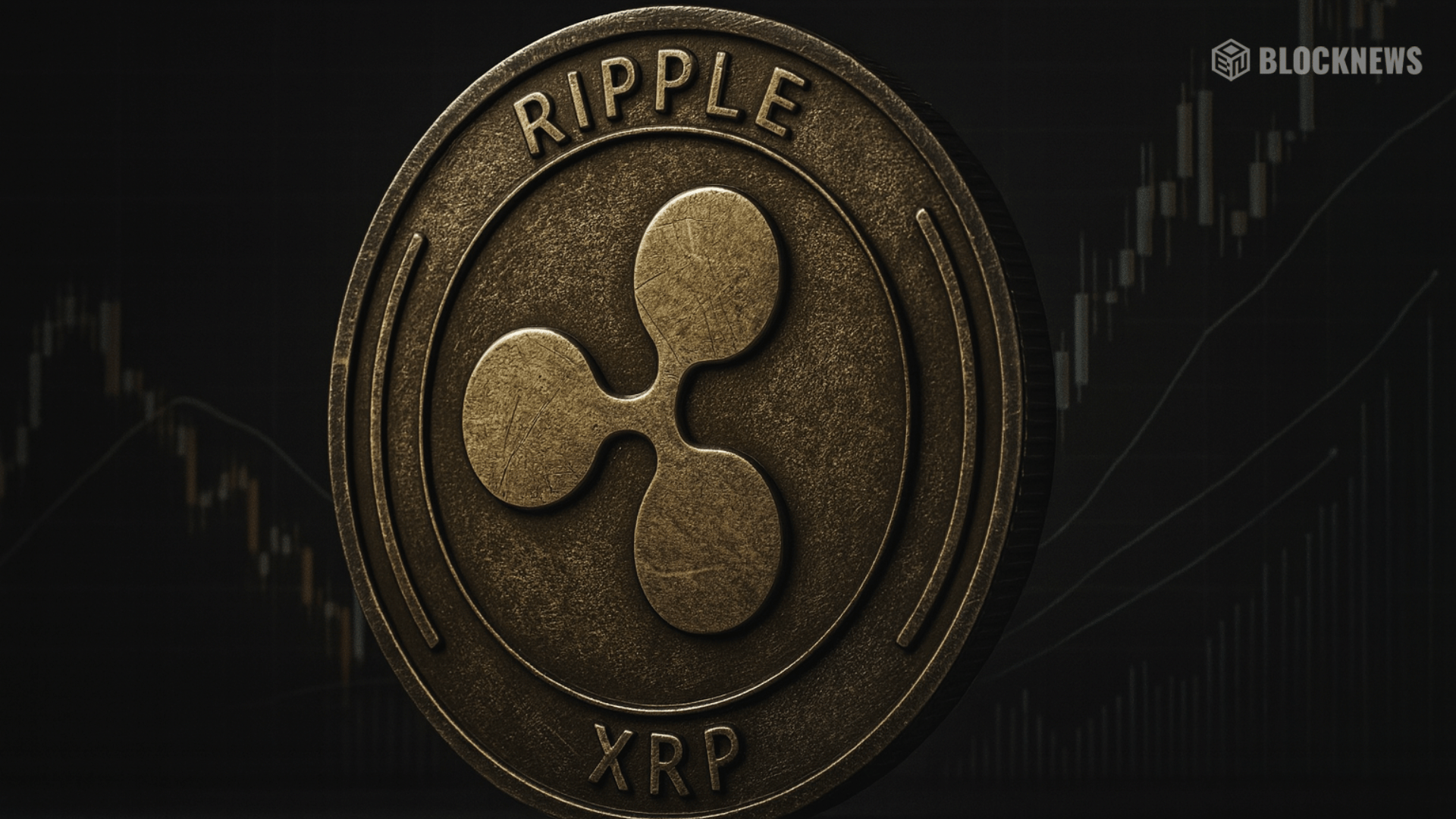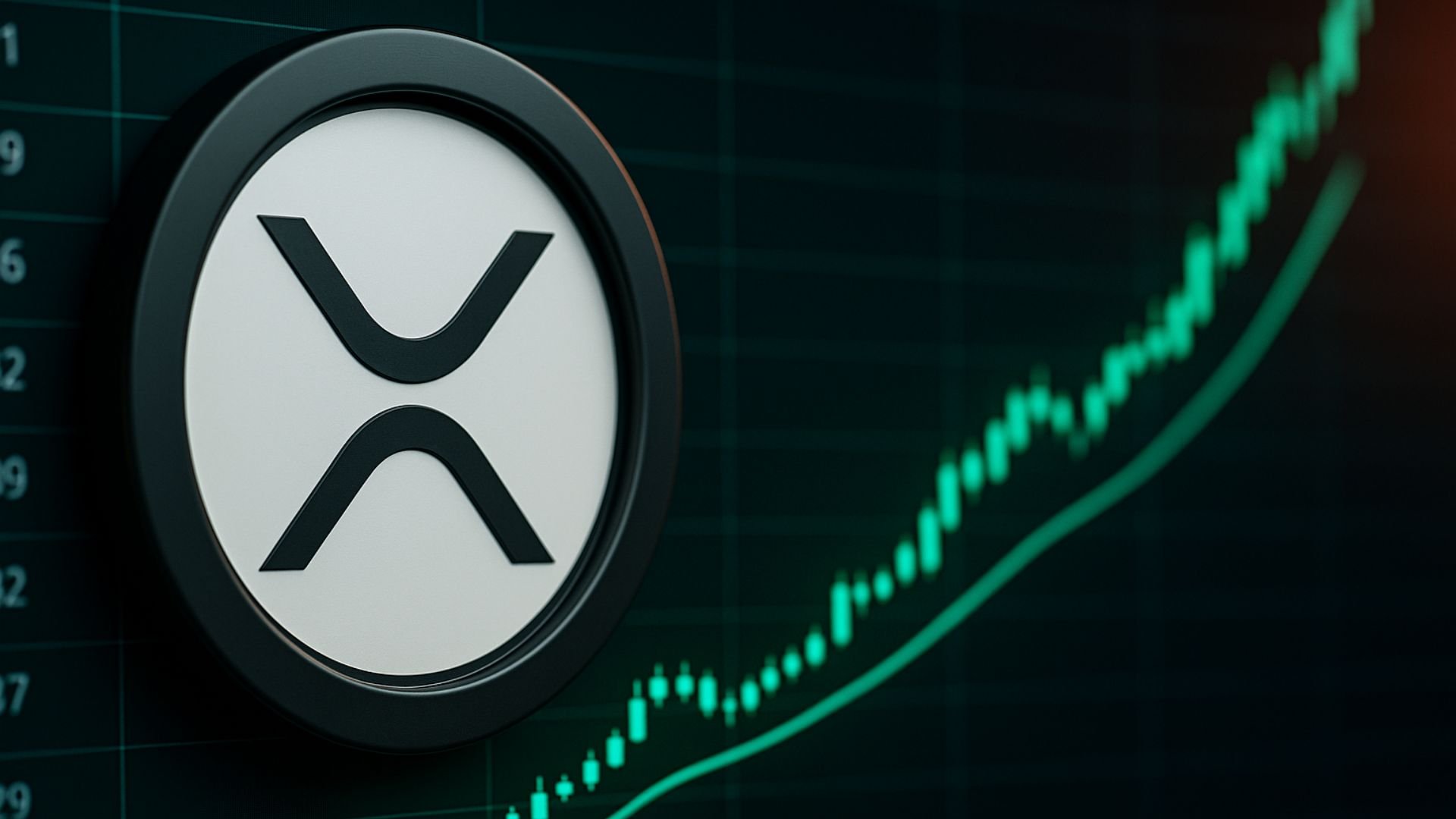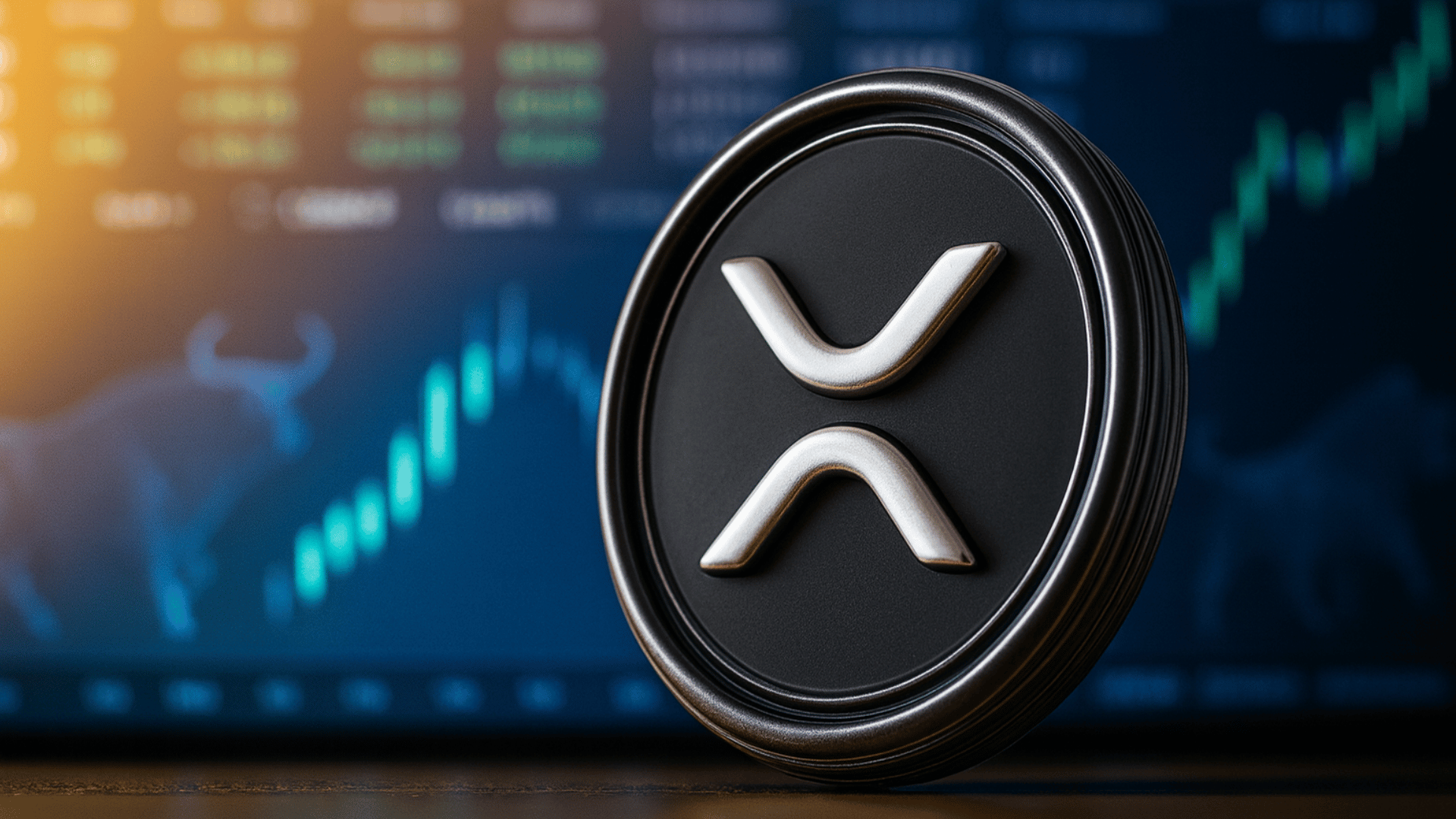XRP: From Legal Shadows to $10 Dreams—Is the Next Bull Run Its Moment?

- XRP is shaking off years of SEC-related baggage, with Ripple pushing into tokenization, real-world assets, and even banking ambitions that could make it core financial infrastructure.
- Analysts see $10 as a realistic target this cycle, especially if ETF approval lands—some even call it “conservative” given Ripple’s positioning in a $19T tokenization market.
- With institutional adoption rising and Ripple’s Trojan horse play against SWIFT, XRP’s next chapter looks less like speculation and more like a bid to power the rails of global finance.
Every bull run has its breakout stars, and XRP looks like it’s finally stepping into the spotlight after years of baggage. For the better part of a decade, Ripple’s token has been tied down by lawsuits, regulatory fog, and endless debates about whether it should be labeled a security. But that chapter’s closing. With the SEC fight essentially in the rearview mirror, XRP now has room to breathe—and maybe even to fly.
Ripple isn’t just talking about faster payments anymore. They’re building out a whole ecosystem: tokenization, real-world assets, banking infrastructure, and even whispers of a fully regulated crypto bank. These aren’t just pitches on a whiteboard. They’re moves already being executed. And when you stack that against the broader market—ETFs heating up, institutional adoption on the rise, regulatory clarity arriving—you start to wonder if XRP isn’t one of the most asymmetric bets left on the table.
The billion-dollar question: could it hit $10 this cycle? At first glance, it sounds like another moonshot. But when you dig into the numbers, the partnerships, and the timing… maybe it isn’t so far-fetched.
Tokenization & RWAs — The $19 Trillion Prize
Tokenization is no longer a buzzword thrown around at conferences. It’s happening, right now. Ripple, alongside Boston Consulting Group, estimates the real-world asset tokenization market could balloon to $19 trillion by 2033. For context, that’s roughly the size of the U.S. bond market.
We’re already seeing the early waves. First, institutions are tokenizing liquid assets like government bonds, treasuries, and money market funds. Then comes the trickier stuff: real estate, private credit, alternative investments—markets that have historically been frozen to all but the wealthiest. Eventually, tokenization spills beyond finance altogether, embedding into supply chains, commodities, and even IP rights.
And this is where XRP comes in. Ripple is positioning it as the liquidity bridge—moving value between currencies, assets, and borders with minimal friction. It’s not just theory. BlackRock rolled out a $100M tokenized U.S. Treasury fund this year. JPMorgan’s Onyx platform is already settling tokenized collateral transactions. Ripple is making sure XRP is the connective tissue between these experiments, hoping to become the highway that all these trillions will eventually travel on.
If that vision plays out—even partially—XRP stops being just another altcoin. It becomes infrastructure. And infrastructure is where the real money is.
Ripple’s Bank Ambition — A Crypto First
Payments were only step one. Ripple now wants to play at the banking level. Earlier this year, they applied for a national trust bank charter with the OCC. If granted, Ripple would launch the Ripple National Trust Bank—the first crypto-native trust bank owned by a major blockchain company.
The plan is ambitious: access to the Fed’s systems (FedWire), full custody offerings, 24/7 operations beyond traditional hours. Basically, a regulated banking backbone designed to blend digital assets with the legacy system. Documents show Ripple wants to hold stablecoin reserves, manage payments, and build out fiduciary services—directly under federal oversight.
Of course, not everyone’s thrilled. Traditional banking groups are pushing back hard, warning regulators about consumer safety and systemic risk. But with crypto-friendly leadership at the OCC and Ripple’s legal cloud lifting, many believe it’s only a matter of time before the charter gets through. If it happens, Ripple wouldn’t just be a blockchain company anymore—it’d be a bank. And that changes everything for XRP.
Ripple vs. SWIFT — The Trojan Horse Play
SWIFT has dominated global payments for decades. Ripple wants to take its crown. CEO Brad Garlinghouse has even said they’re aiming for a “double-digit percentage” of SWIFT’s transaction flow within a few years. That’s trillions in cross-border transfers.
RippleNet’s pitch is simple: why wait two to three days for settlement when you can do it instantly, cheaper, and with fewer errors? Their acquisition of Rail also gives them a foothold in stablecoin settlement—something analysts think could let Ripple process up to 10% of global B2B stablecoin payments within a year.
The clever part? Ripple isn’t demanding banks abandon SWIFT entirely. Instead, they’re building connections between RippleNet and SWIFT’s GPI system. Banks can keep using SWIFT as the front door, but Ripple quietly powers the actual settlement behind the scenes. It’s a Trojan horse strategy—let them keep their familiar system while Ripple takes over the plumbing. And if it works, XRP becomes the grease that keeps global money moving.
The ETF Wildcard — Billions Waiting on the Sidelines
In today’s markets, one of the biggest catalysts for any asset is whether it can secure an ETF. Look at what spot Bitcoin ETFs did—tens of billions in inflows in a matter of months. Ethereum ETFs are live now too, proving regulators are finally warming up to the idea.
And XRP? With the SEC case wrapped up, many analysts believe it’s next in line. An ETF would be a tidal wave of legitimacy. Pension funds, banks, and hedge funds could allocate billions without touching crypto exchanges or worrying about custody. Even a modest 1% allocation from global funds would represent billions in inflows—instant demand shock.
Rumors suggest Ripple is already in talks with big institutions about this. If an XRP ETF lands, it could light the fuse for the kind of parabolic run we haven’t seen since XRP’s $3.80 all-time high back in 2018. Except now, the fundamentals are much stronger.
Analyst Predictions — Is $10 Really on the Table?
Here’s the fun part. Analysts are lining up behind the $10 narrative. Some are even calling for $15 or $20 if things play out right. Their reasoning is simple: in 2018, XRP nearly hit $4 with far less adoption, no ETF speculation, and constant legal drama. Today, it’s got central banks testing with it, governments interested in its tech, and a roadmap that ties into the largest financial trend of the decade—tokenization.
Price models show that if Ripple captures even a slice of the $19 trillion RWA market, demand for XRP could soar. Firms like FXStreet and AMB Crypto recently put out notes saying $10 is “not just likely but conservative” in the next cycle, especially if ETF approval lands. That’s nearly a 10x from current levels, something very few large-cap cryptos can realistically claim.
Sure, it won’t be a straight line. Crypto never is. There’ll be dips, volatility, and overreactions along the way. But with both retail and institutions now circling XRP, the ingredients are all there for a breakout.
The Big Picture — XRP’s Next Chapter
So here’s where we are: XRP is no longer just a speculative side play. It’s positioning itself as the backbone of global finance—tokenization, banking, payments, and maybe even ETFs. After years of being held back, the restraints are gone.
The irony is that while many retail traders still shrug XRP off as “the old banker’s coin,” institutions are quietly preparing for it to be the rails of a new financial system. That’s the setup: one of the most liquid, battle-tested cryptos, finally free from its legal baggage, sitting on the edge of massive adoption.
Whether it’s $10, $15, or more, the key takeaway is this: XRP’s story isn’t over. In fact, it might be just getting started.
The post XRP: From Legal Shadows to $10 Dreams—Is the Next Bull Run Its Moment? first appeared on BlockNews.
XRP: From Legal Shadows to $10 Dreams—Is the Next Bull Run Its Moment?

- XRP is shaking off years of SEC-related baggage, with Ripple pushing into tokenization, real-world assets, and even banking ambitions that could make it core financial infrastructure.
- Analysts see $10 as a realistic target this cycle, especially if ETF approval lands—some even call it “conservative” given Ripple’s positioning in a $19T tokenization market.
- With institutional adoption rising and Ripple’s Trojan horse play against SWIFT, XRP’s next chapter looks less like speculation and more like a bid to power the rails of global finance.
Every bull run has its breakout stars, and XRP looks like it’s finally stepping into the spotlight after years of baggage. For the better part of a decade, Ripple’s token has been tied down by lawsuits, regulatory fog, and endless debates about whether it should be labeled a security. But that chapter’s closing. With the SEC fight essentially in the rearview mirror, XRP now has room to breathe—and maybe even to fly.
Ripple isn’t just talking about faster payments anymore. They’re building out a whole ecosystem: tokenization, real-world assets, banking infrastructure, and even whispers of a fully regulated crypto bank. These aren’t just pitches on a whiteboard. They’re moves already being executed. And when you stack that against the broader market—ETFs heating up, institutional adoption on the rise, regulatory clarity arriving—you start to wonder if XRP isn’t one of the most asymmetric bets left on the table.
The billion-dollar question: could it hit $10 this cycle? At first glance, it sounds like another moonshot. But when you dig into the numbers, the partnerships, and the timing… maybe it isn’t so far-fetched.
Tokenization & RWAs — The $19 Trillion Prize
Tokenization is no longer a buzzword thrown around at conferences. It’s happening, right now. Ripple, alongside Boston Consulting Group, estimates the real-world asset tokenization market could balloon to $19 trillion by 2033. For context, that’s roughly the size of the U.S. bond market.
We’re already seeing the early waves. First, institutions are tokenizing liquid assets like government bonds, treasuries, and money market funds. Then comes the trickier stuff: real estate, private credit, alternative investments—markets that have historically been frozen to all but the wealthiest. Eventually, tokenization spills beyond finance altogether, embedding into supply chains, commodities, and even IP rights.
And this is where XRP comes in. Ripple is positioning it as the liquidity bridge—moving value between currencies, assets, and borders with minimal friction. It’s not just theory. BlackRock rolled out a $100M tokenized U.S. Treasury fund this year. JPMorgan’s Onyx platform is already settling tokenized collateral transactions. Ripple is making sure XRP is the connective tissue between these experiments, hoping to become the highway that all these trillions will eventually travel on.
If that vision plays out—even partially—XRP stops being just another altcoin. It becomes infrastructure. And infrastructure is where the real money is.
Ripple’s Bank Ambition — A Crypto First
Payments were only step one. Ripple now wants to play at the banking level. Earlier this year, they applied for a national trust bank charter with the OCC. If granted, Ripple would launch the Ripple National Trust Bank—the first crypto-native trust bank owned by a major blockchain company.
The plan is ambitious: access to the Fed’s systems (FedWire), full custody offerings, 24/7 operations beyond traditional hours. Basically, a regulated banking backbone designed to blend digital assets with the legacy system. Documents show Ripple wants to hold stablecoin reserves, manage payments, and build out fiduciary services—directly under federal oversight.
Of course, not everyone’s thrilled. Traditional banking groups are pushing back hard, warning regulators about consumer safety and systemic risk. But with crypto-friendly leadership at the OCC and Ripple’s legal cloud lifting, many believe it’s only a matter of time before the charter gets through. If it happens, Ripple wouldn’t just be a blockchain company anymore—it’d be a bank. And that changes everything for XRP.
Ripple vs. SWIFT — The Trojan Horse Play
SWIFT has dominated global payments for decades. Ripple wants to take its crown. CEO Brad Garlinghouse has even said they’re aiming for a “double-digit percentage” of SWIFT’s transaction flow within a few years. That’s trillions in cross-border transfers.
RippleNet’s pitch is simple: why wait two to three days for settlement when you can do it instantly, cheaper, and with fewer errors? Their acquisition of Rail also gives them a foothold in stablecoin settlement—something analysts think could let Ripple process up to 10% of global B2B stablecoin payments within a year.
The clever part? Ripple isn’t demanding banks abandon SWIFT entirely. Instead, they’re building connections between RippleNet and SWIFT’s GPI system. Banks can keep using SWIFT as the front door, but Ripple quietly powers the actual settlement behind the scenes. It’s a Trojan horse strategy—let them keep their familiar system while Ripple takes over the plumbing. And if it works, XRP becomes the grease that keeps global money moving.
The ETF Wildcard — Billions Waiting on the Sidelines
In today’s markets, one of the biggest catalysts for any asset is whether it can secure an ETF. Look at what spot Bitcoin ETFs did—tens of billions in inflows in a matter of months. Ethereum ETFs are live now too, proving regulators are finally warming up to the idea.
And XRP? With the SEC case wrapped up, many analysts believe it’s next in line. An ETF would be a tidal wave of legitimacy. Pension funds, banks, and hedge funds could allocate billions without touching crypto exchanges or worrying about custody. Even a modest 1% allocation from global funds would represent billions in inflows—instant demand shock.
Rumors suggest Ripple is already in talks with big institutions about this. If an XRP ETF lands, it could light the fuse for the kind of parabolic run we haven’t seen since XRP’s $3.80 all-time high back in 2018. Except now, the fundamentals are much stronger.
Analyst Predictions — Is $10 Really on the Table?
Here’s the fun part. Analysts are lining up behind the $10 narrative. Some are even calling for $15 or $20 if things play out right. Their reasoning is simple: in 2018, XRP nearly hit $4 with far less adoption, no ETF speculation, and constant legal drama. Today, it’s got central banks testing with it, governments interested in its tech, and a roadmap that ties into the largest financial trend of the decade—tokenization.
Price models show that if Ripple captures even a slice of the $19 trillion RWA market, demand for XRP could soar. Firms like FXStreet and AMB Crypto recently put out notes saying $10 is “not just likely but conservative” in the next cycle, especially if ETF approval lands. That’s nearly a 10x from current levels, something very few large-cap cryptos can realistically claim.
Sure, it won’t be a straight line. Crypto never is. There’ll be dips, volatility, and overreactions along the way. But with both retail and institutions now circling XRP, the ingredients are all there for a breakout.
The Big Picture — XRP’s Next Chapter
So here’s where we are: XRP is no longer just a speculative side play. It’s positioning itself as the backbone of global finance—tokenization, banking, payments, and maybe even ETFs. After years of being held back, the restraints are gone.
The irony is that while many retail traders still shrug XRP off as “the old banker’s coin,” institutions are quietly preparing for it to be the rails of a new financial system. That’s the setup: one of the most liquid, battle-tested cryptos, finally free from its legal baggage, sitting on the edge of massive adoption.
Whether it’s $10, $15, or more, the key takeaway is this: XRP’s story isn’t over. In fact, it might be just getting started.
The post XRP: From Legal Shadows to $10 Dreams—Is the Next Bull Run Its Moment? first appeared on BlockNews.
 FULL VIDEO HERE:
FULL VIDEO HERE: 
